
Wetenschap
Je kunt zien waar de Webb-telescoop een voltreffer kreeg van een micrometeoriet op een van zijn spiegels
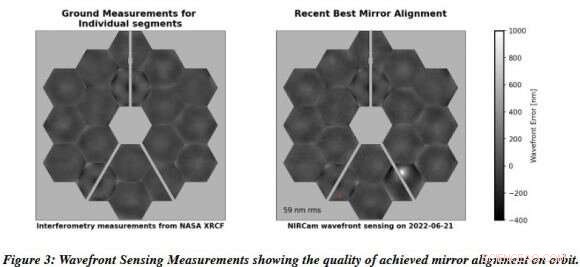
Vergelijking van Webb's spiegeluitlijningen, ontleend aan het rapport "Karakterisatie van JWST-wetenschappelijke prestaties van inbedrijfstelling" (12 juli 2022). Krediet:NASA/ESA/CSA
De wereld wankelt nog steeds van de release van de eerste beelden van de James Webb Space Telescope (JWST). Deze gaven een uitgebreid overzicht van het soort wetenschappelijke operaties dat Webb zal uitvoeren tijdens zijn 20-jarige missie. Ze omvatten de meest gevoelige en gedetailleerde blik op enkele iconische astronomische objecten, spectra van een exoplaneetatmosfeer en een diepveldbeeld van enkele van de meest verre sterrenstelsels in het universum. Sinds hun vrijlating zijn we ook getrakteerd op glimpen van objecten in het zonnestelsel die zijn vastgelegd door de infraroodinstrumenten van Webb.
Ondertussen heeft de JWST-samenwerking een volledig rapport uitgebracht met de titel "Karakterisatie van JWST-wetenschappelijke prestaties vanaf inbedrijfstelling", waarin ze alles hebben onderzocht wat Webb tot nu toe heeft bereikt en wat ze verwachten tijdens de missie. Dit artikel is onlangs online verschenen en behandelt alles, van de navigatie van de telescoop en het aanwijzen van de prestaties van de vele instrumenten. Een interessant weetje, dat niet eerder werd vrijgegeven, is hoe Webb een reeks micrometeoroïde-inslagen kreeg, waarvan er één "niet-corrigeerbare verandering" veroorzaakte in één spiegelsegment.
Het team achter deze studie omvatte onderzoekers van de drie deelnemende ruimteagentschappen - NASA, de European Space Agency (ESA) en de Canadian Space Agency (CSA) - en van de vele partneragentschappen van de missie. Deze omvatten het Space Telescope Science Institute (STScI), het Niels Bohr Institute, het Max-Planck-Institut für Astronomie (MPIA), het UK Astronomy Technology Centre (UK ATC), de National Research Council Canada (NRCC), het Instituto Nacional de Técnica Aeroespacial (INTA), het Centro de Astrobiología (CAB), en vele ruimtevaartbedrijven, universiteiten, onderzoeksinstituten en agentschappen over de hele wereld.
Het document dat ze samenstelden, beoordeelt de JWST-prestaties tijdens de zes maanden durende inbedrijfstellingsperiode voordat het op 12 juli 2022 in gebruik werd genomen. Dit bestond uit het karakteriseren van de prestaties van het observatorium in de baan, het ontwerp en de architectuur van de JWST en de voor de lancering voorspelde prestaties. Deze werden vervolgens vergeleken met de prestaties van het ruimtevaartuig, de telescopen, wetenschappelijke instrumenten en het grondsysteem. Hoofdstuk 4 van het rapport, Optische prestaties, gaat in op hoe de verschillende instrumenten van Webb tijdens de inbedrijfstellingsperiode functioneerden.
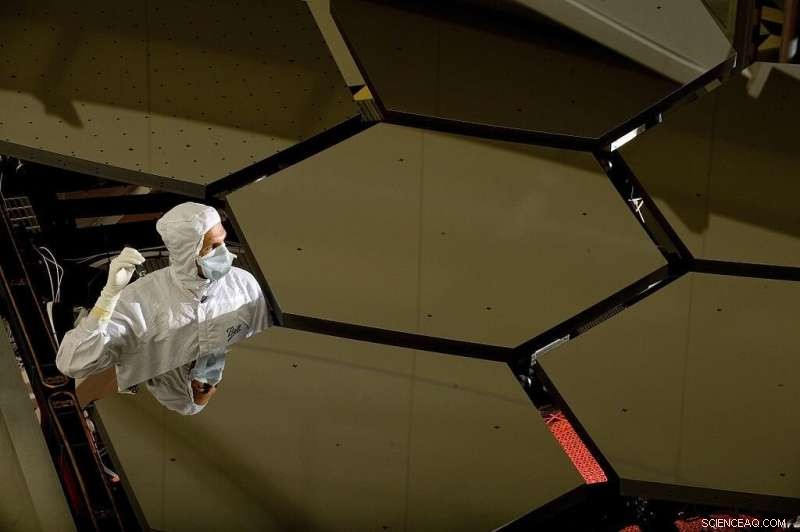
Een primair spiegelsegment van de James Webb Space Telescope, gemaakt van beryllium. Krediet:NASA/MSFC/David Higginbotham/Emmett Given
De hoofdspiegel van de JWST bestaat uit achttien zeshoekige segmenten die in een honingraatconfiguratie zijn gerangschikt. Elk segment is samengesteld uit verguld beryllium en ze zijn allemaal uitgelijnd om de hoogst mogelijke resolutie en gevoeligheid te garanderen. De algehele prestatie wordt gemeten in termen van Wavefront Error (WFE), wat verwijst naar hoe licht dat door de spiegels van de telescoop wordt opgevangen, afwijkt van de verwachte golflengte van licht. De totale omvang wordt bepaald door de afwijking van het verzamelde licht te berekenen van de Root-Mean-Square (RMS)-fout - het sferische gemiddelde van het gehele golffront.
Dit wordt wiskundig uitgedrukt met behulp van de eenheden van de bepaalde golflengte, gemeten in nanometers (nm) als het om infraroodgolflengten gaat. Paragraaf 4.7 gaat in op de impact van micrometeoroïden en hun potentiële effect op de optische prestaties van Webb op de lange termijn. De beoordeling begint door de lezers eraan te herinneren dat elk ruimtevaartuig onvermijdelijk micrometeoroïden zal tegenkomen, en geeft vervolgens aan hoe verschillende effecten werden verwacht tijdens de inbedrijfstellingsperiode:
"Tijdens de inbedrijfstelling registreerde golffrontdetectie zes gelokaliseerde oppervlaktevervormingen op de primaire spiegel die worden toegeschreven aan impact door micrometeoroïden. Deze kwamen voor met een snelheid (ongeveer één per maand) die consistent was met de verwachtingen vóór de lancering. Elke micrometeoroïde veroorzaakte degradatie in het golffront van de impacted mirror segment, as measured during regular wavefront sensing. Some of the resulting wavefront degradation is correctable through regular wavefront control; some of it comprises high spatial frequency terms that cannot be corrected."
They further indicate that these micrometeoroid impacts were detected so far through wavefront sensing. Five of the six detected impacts had negligible effects, contributing to a combined total of less than 1 nanometer to the overall wavefront error. However, the remaining impact, which occurred between May 22nd and May 24th, caused a "significant uncorrectable change" in the overall figure of segment C3. This segment is located on the lower right side of Webb's primary mirror (when seen from the front), and the effect is illustrated in the Report (see image above).
Luckily, the overall effect was small since only a small portion of the telescope area was affected by it. The mission teams also conducted two realignment steps to correct for the impact, which brought the telescope alignment to a minimum of 59 nm RMS, which is about 5 to 10 nm above the previous best wavefront error RMS values. The authors of the Report also go on to note that "drifts and stability levels" in the telescope typically result in a "telescope contribution" of between 60 (minimum) to 80 nm RMS—at which point, wavefront control is typically performed.
They also explain that it is unknown at this time whether or not the May 2022 impact to segment C3 was rare or something that can be expected to happen frequently throughout JWST's mission. As they state, this is essential if the JWST mission teams hope to determine if the telescope will be more susceptible to damage by micrometeoroids than pre-launch modeling predicted:
"The project team is conducting additional investigations into the micrometeoroid population, how impacts affect beryllium mirrors, and the efficacy and efficiency tradeoffs of potential mitigations such as pointing restrictions that would minimize time spent looking in the direction of orbital motion, which statistically has higher micrometeoroid rates and energies."
To summarize, the impact on the C3 segment raised concerns among the mission controllers. But the upside is that it was nothing they couldn't address and is not expected to affect Webb's long-term science operations. As the Report summarizes:
"The key outcome of six months of commissioning is this:JWST is fully capable of achieving the discoveries for which it was built. JWST was envisioned 'to enable fundamental breakthroughs in our understanding of the formation and evolution of galaxies, stars, and planetary systems'… we now know with certainty that it will. The telescope and instrument suite have demonstrated the sensitivity, stability, image quality, and spectral range that are necessary to transform our understanding of the cosmos through observations spanning from near-earth asteroids to the most distant galaxies."
Moreover, the Report's authors conclude that the JWST's performance has been better than expected, almost across the entire board. In terms of the optical alignment of its mirrors, the point spread function, the time-stability of its imaging, and the fine guidance system that points the observatory, Webb has exceeded expectations. They also indicate that the mirrors are cleaner, and the science instruments have generally provided higher total system throughput than pre-launch expectations. All of this adds up to some optimistic appraisals:
"Collectively, these factors translate into substantially better sensitivity for most instrument modes than was assumed in the exposure time calculator for Cycle 1 observation planning, in many cases by tens of percent. In most cases, JWST will go deeper faster than expected. In addition, JWST has enough propellant on board to last at least 20 years."
The JWST Collaboration stated that further details will be presented in a planned series of papers. These will appear in a special issue of the Publications of the Astronomical Society of the Pacific (PASP) dedicated to the JWST. + Verder verkennen
James Webb telescope hit by micrometeoroid:NASA
 Afbreekbaar polyurethaanadsorptiemiddel op basis van lignine voor efficiënte reiniging van ruwe olie
Afbreekbaar polyurethaanadsorptiemiddel op basis van lignine voor efficiënte reiniging van ruwe olie Het bewaren van de inhoud van de New York Public Library in een theelepel eiwit, zonder energie, voor miljoenen jaren
Het bewaren van de inhoud van de New York Public Library in een theelepel eiwit, zonder energie, voor miljoenen jaren Het gebruik voor Watermelon Rind
Het gebruik voor Watermelon Rind Burgerwetenschappers ontwerpen gloednieuwe eiwitten
Burgerwetenschappers ontwerpen gloednieuwe eiwitten Ingenieurs onthullen moleculaire geheimen van de krachten van koppotigen
Ingenieurs onthullen moleculaire geheimen van de krachten van koppotigen
 Warmste september van afgelopen maand wereldwijd gemeten:EU
Warmste september van afgelopen maand wereldwijd gemeten:EU Woon-werkverkeer in tijden van zeestijging. De Miami Beach-app kan je vertellen hoe je overstromingen kunt voorkomen
Woon-werkverkeer in tijden van zeestijging. De Miami Beach-app kan je vertellen hoe je overstromingen kunt voorkomen Uitgebreid overzicht van Amerikaanse normen voor brandstofverbruik laten grote besparingen zien op brandstof en emissies
Uitgebreid overzicht van Amerikaanse normen voor brandstofverbruik laten grote besparingen zien op brandstof en emissies Zonlicht stimuleert microbiële ademhaling van organische koolstof
Zonlicht stimuleert microbiële ademhaling van organische koolstof Obama zet stappen om Trumps handen vast te binden aan Arctic, Atlantische boringen
Obama zet stappen om Trumps handen vast te binden aan Arctic, Atlantische boringen
Hoofdlijnen
- Evidence of Evolution: The Origin of Plants, Animals & Fungi
- Zenuwonderzoek laat zien hoe cellen zich aanpassen om schade te helpen herstellen
- Gewassen evolueerden 10 millennia eerder dan gedacht
- Onderzoekers werpen nieuw licht op gopherschildpadden
- Live hersenactiviteit volgen met de nieuwe NeuBtracker open-source microscoop
- Een biologische oplossing voor het afvangen en recyclen van koolstof?
- Actief transport: een overzicht van primair en secundair
- Milieubeheer van inheemse naties bij het aanpakken van invasieve soorten
- Onderzoekers genereren tomaten met verbeterde antioxiderende eigenschappen door genetische manipulatie
- Schokgolven van stellaire explosies hebben de voorkeursrichting
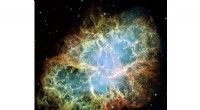
- Astrofysici beslechten kosmisch debat over magnetisme van planeten en sterren
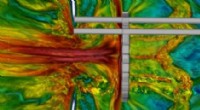
- Het huidige vermogen om zwaartekrachttheorieën te testen met schaduwen van zwarte gaten
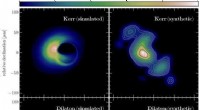
- Röntgenpulsar XTE J1946+274 onderzocht met NuSTAR
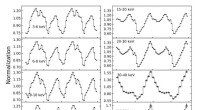
- Verbergt de Amerikaanse regering nieuw bewijs van buitenaards leven?
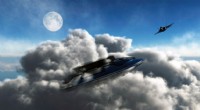
 UCI-wetenschappers zijn de eersten om te observeren, afbeelding allerbelangrijkste moleculaire trillingen
UCI-wetenschappers zijn de eersten om te observeren, afbeelding allerbelangrijkste moleculaire trillingen Ingenieurs ontwikkelen techniek om adaptieve materialen te maken
Ingenieurs ontwikkelen techniek om adaptieve materialen te maken YouTube vernieuwt streaming muziekservice
YouTube vernieuwt streaming muziekservice Umklapp-verstrooiing in superroosters blijkt de mobiliteit van grafenenladingsdragers bij hoge temperaturen te verminderen
Umklapp-verstrooiing in superroosters blijkt de mobiliteit van grafenenladingsdragers bij hoge temperaturen te verminderen Welke aanpassingen moeten bevers overleven?
Welke aanpassingen moeten bevers overleven?  NASA ontdekt dat het metrogebied van Virginia ongelijk aan het zinken is
NASA ontdekt dat het metrogebied van Virginia ongelijk aan het zinken is Animal News Roundup! Drie rare nieuwe ontdekkingen die je moet weten
Animal News Roundup! Drie rare nieuwe ontdekkingen die je moet weten  Warmtebehandeling kan chemotherapie effectiever maken
Warmtebehandeling kan chemotherapie effectiever maken
- Elektronica
- Biologie
- Zonsverduistering
- Wiskunde
- French | Italian | Spanish | Portuguese | Swedish | German | Dutch | Danish | Norway |

-
Wetenschap © https://nl.scienceaq.com

